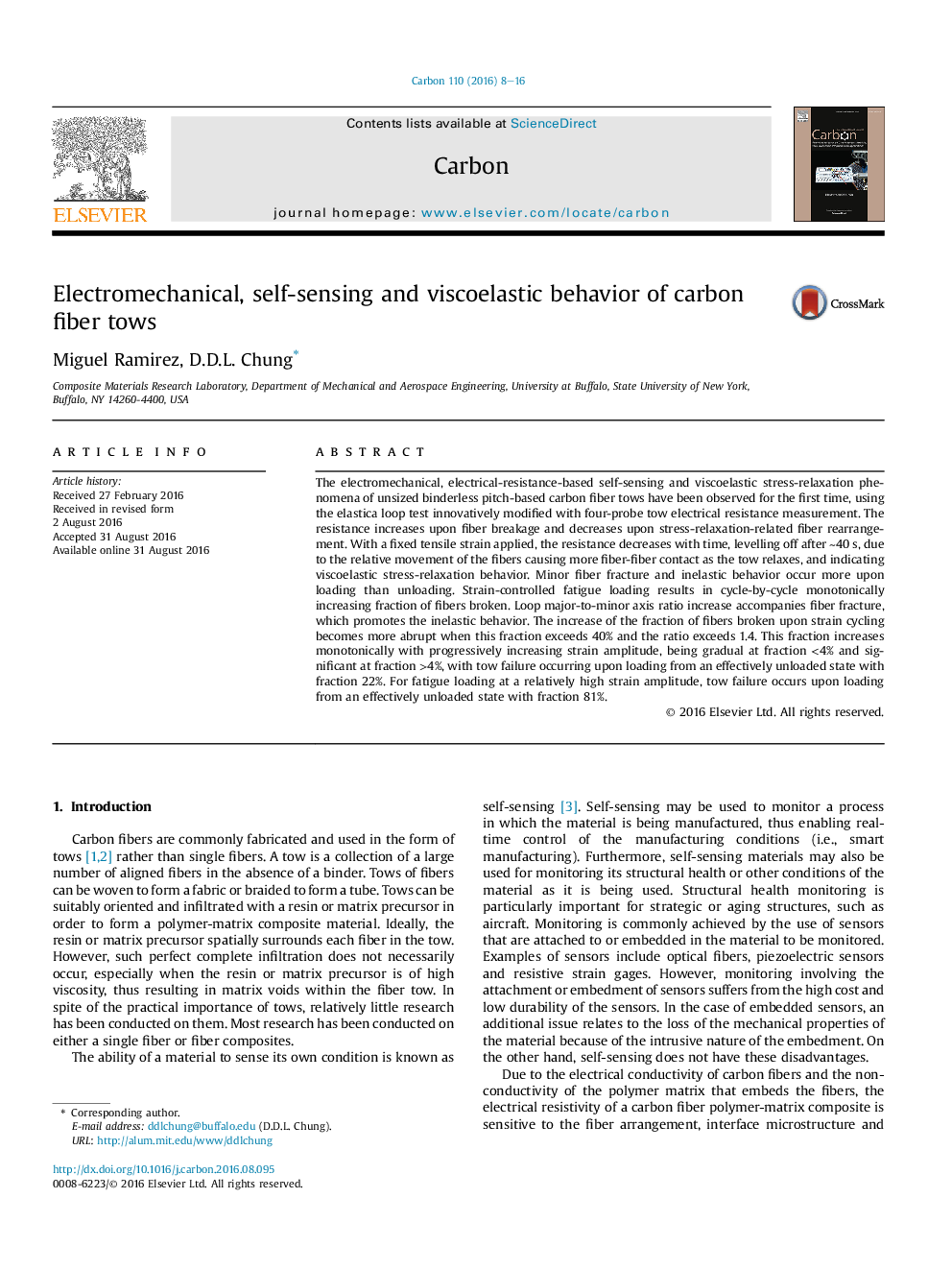| کد مقاله | کد نشریه | سال انتشار | مقاله انگلیسی | نسخه تمام متن |
|---|---|---|---|---|
| 5432692 | 1508837 | 2016 | 9 صفحه PDF | دانلود رایگان |

The electromechanical, electrical-resistance-based self-sensing and viscoelastic stress-relaxation phenomena of unsized binderless pitch-based carbon fiber tows have been observed for the first time, using the elastica loop test innovatively modified with four-probe tow electrical resistance measurement. The resistance increases upon fiber breakage and decreases upon stress-relaxation-related fiber rearrangement. With a fixed tensile strain applied, the resistance decreases with time, levelling off after â¼40Â s, due to the relative movement of the fibers causing more fiber-fiber contact as the tow relaxes, and indicating viscoelastic stress-relaxation behavior. Minor fiber fracture and inelastic behavior occur more upon loading than unloading. Strain-controlled fatigue loading results in cycle-by-cycle monotonically increasing fraction of fibers broken. Loop major-to-minor axis ratio increase accompanies fiber fracture, which promotes the inelastic behavior. The increase of the fraction of fibers broken upon strain cycling becomes more abrupt when this fraction exceeds 40% and the ratio exceeds 1.4. This fraction increases monotonically with progressively increasing strain amplitude, being gradual at fraction <4% and significant at fraction >4%, with tow failure occurring upon loading from an effectively unloaded state with fraction 22%. For fatigue loading at a relatively high strain amplitude, tow failure occurs upon loading from an effectively unloaded state with fraction 81%.
Journal: Carbon - Volume 110, December 2016, Pages 8-16